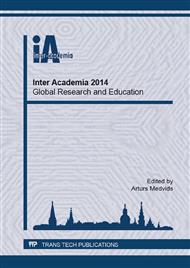p.223
p.227
p.231
p.235
p.241
p.245
p.249
p.254
p.261
Control of Uncertain Systems: A Combined Approach
Abstract:
Nowadays, in the field of control engineering, neural networks (NNs) are very useful, because of their learning ability. In case of control tasks, they are often used to adapt to the unknown or changing behavior of the system to be controlled. When the system is unknown, or partially known, at the beginning, it is very difficult to set the controller properly, and imprecision may occur in the control process. In this case, some extra calculations are needed to get more accurate results. One of the possible solutions is the application of Robust Fixed Point Transformations (RFPT). In this paper, it is shown that RFPT can improve the accuracy of the control achieved by a traditional NN controller.
Info:
Periodical:
Pages:
241-244
Citation:
Online since:
July 2015
Price:
Сopyright:
© 2015 Trans Tech Publications Ltd. All Rights Reserved
Share:
Citation:


